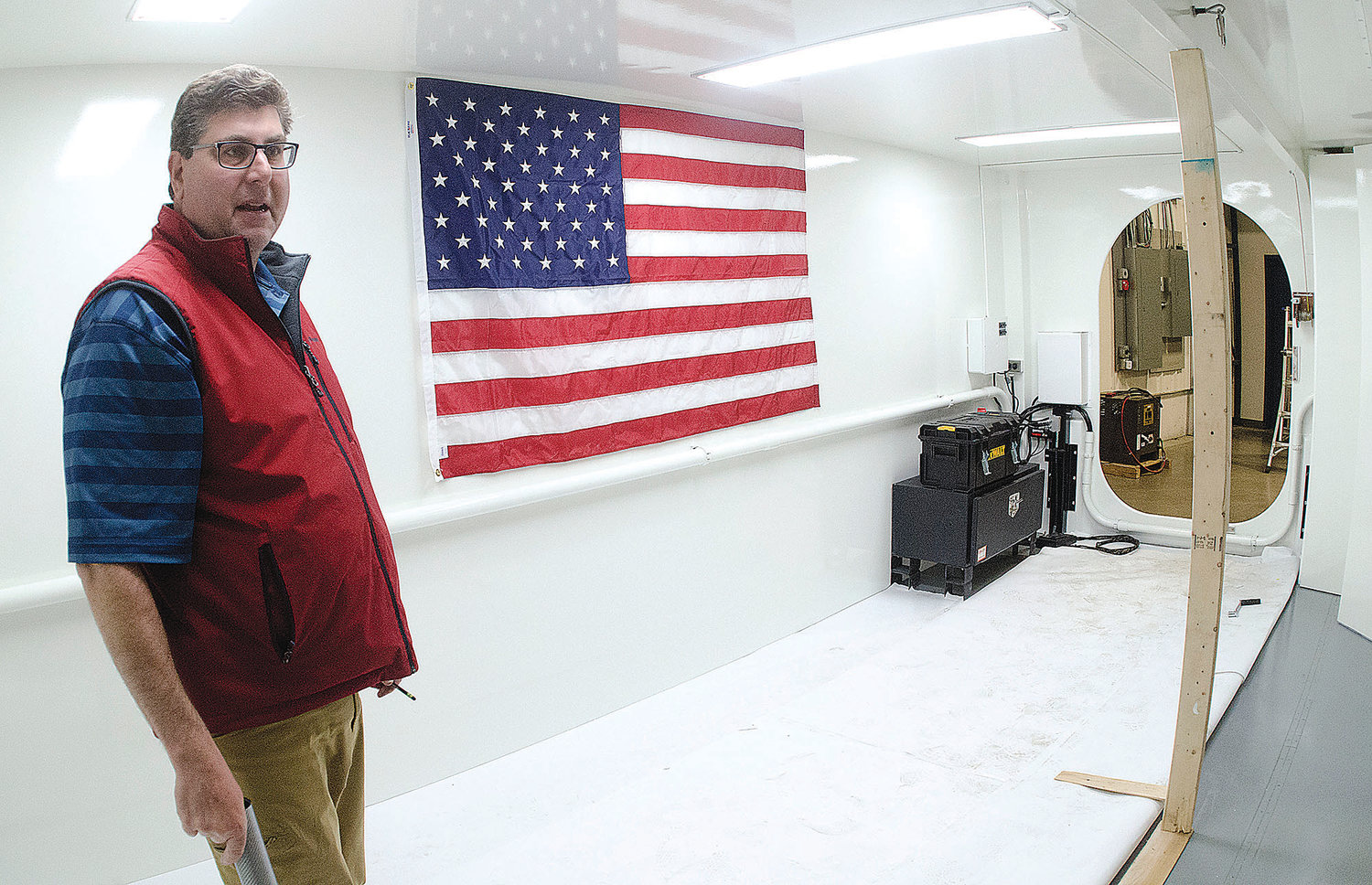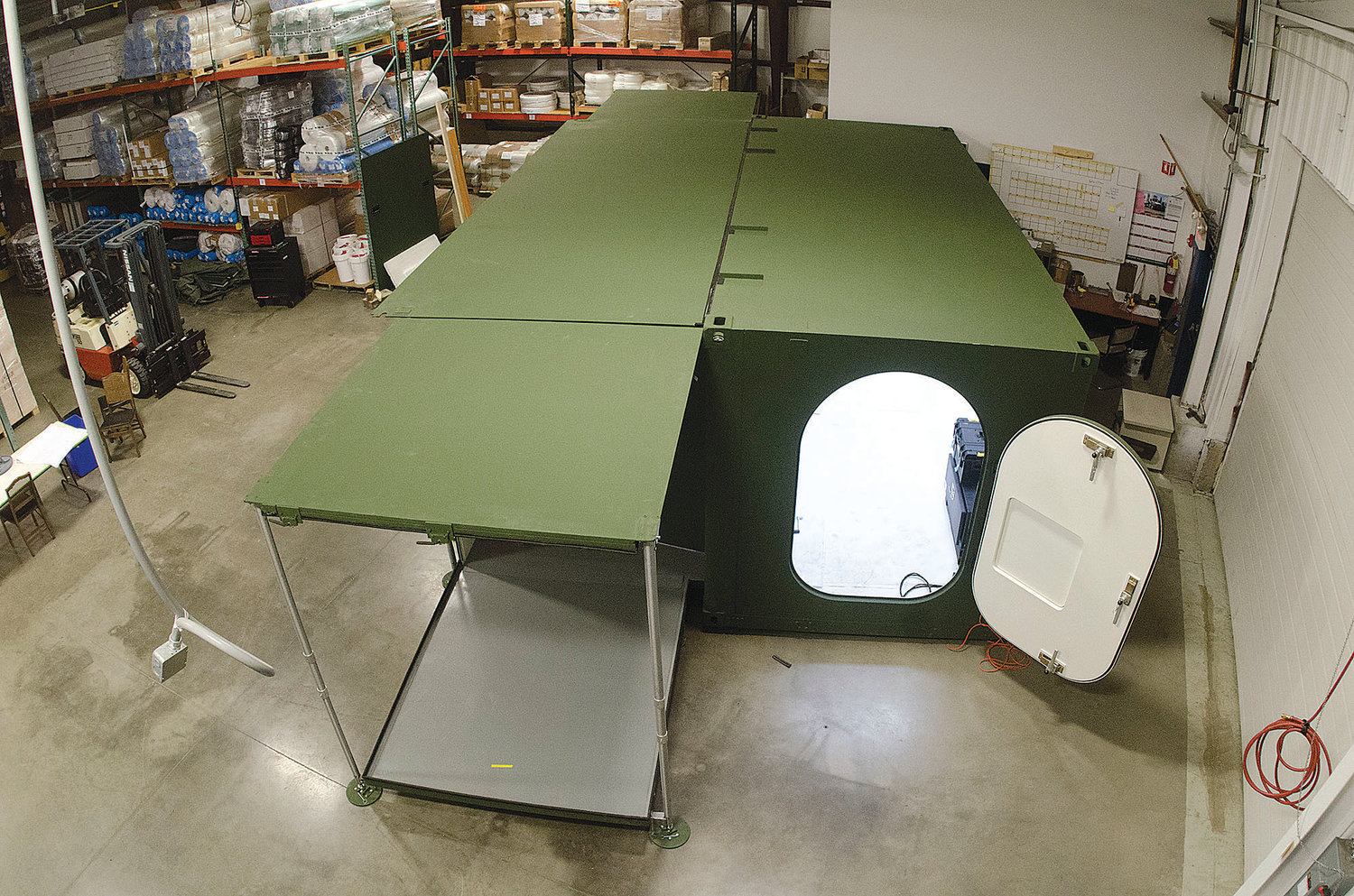Bristol company launches next-generation military shelter
Core Composites’ ‘Joint Warfighter Shelter of the Future’ could soon be saving lives on the front lines
A Bristol composites firm recently unveiled a new mobile shelter that could be used as a wartime field hospital, a tank repair shop or a shelter for military personnel.
Unveiled just last month …
This item is available in full to subscribers.
Please log in to continue |
Register to post eventsIf you'd like to post an event to our calendar, you can create a free account by clicking here. Note that free accounts do not have access to our subscriber-only content. |
Day pass subscribers
Are you a day pass subscriber who needs to log in? Click here to continue.
Bristol company launches next-generation military shelter
Core Composites’ ‘Joint Warfighter Shelter of the Future’ could soon be saving lives on the front lines
A Bristol composites firm recently unveiled a new mobile shelter that could be used as a wartime field hospital, a tank repair shop or a shelter for military personnel.
Unveiled just last month at Core Composites on Tupelo Street, the Joint Warfighter Shelter of the Future (JWSOF) was actually more than nine years in the making.
That’s when Rich O’Meara, founder and president of Core Composites, a division of ROM Development Corporation and a local distributor of composite materials, was first contacted by Naval Sea Systems Command (NAVSEA), now the Naval Undersea Warfare Center (NUWC).
Core composites are materials that consist of a composite “skin,” such as carbon fiber, with a core material that provides insulation and stiffness.
“NAVSEA wanted to evaluate this material,” said Mr. O’Meara, as a possible lighter and less corrosive substitute for “legacy” materials like aluminum. “Part of selling a new material is education … they defined their interest, and we helped them understand that our material was one option.”
Their work attracted the attention of people at The U.S. Army Natick Soldier Systems Center, which develops all things for the comfort and outfitting of soldiers, from clothing to shelters. Over a series of several contracts, Core Composites developed walls, roofs, and floors for shelters, including one “Electronic Maintenance Complex” which is a fully mobile repair shop that follows M1 tanks into battle.
“You can’t very well tow an M1 when it breaks down,” said Mr. O’Meara. “And abandoning them is not an option either.” Fortunately, when M1s break down, the problem is most often electronic, and they can be repaired with a mother board from the mobile repair shop.
A few years ago, Core Composites was contracted to build floors for mobile hospitals, as the ones made from existing materials were found to be too bouncy when packed with doctors and nurses running around doing their jobs. “It was actually making it hard for surgeons to hold their scalpels steady,” said Mr. O’Meara. Core Composites floors are now being retrofitted into all mobile hospitals. Realizing that they were responsible for most of the components, the United States Army Medical Material Development Activity (USAMMDA) asked them to develop a prototype for the whole structure.
The result, which has been in development for the past two years, is a next generation surgical, rigid wall shelter that ships as a shipping container, then expands via a series of lightweight composite walls, roofs and floors. It is stiffer, stronger, larger, and lighter than existing aluminum shelters. It can be both air conditioned and heated, and set up or taken down in less than 30 minutes with two people and limited tools. Built with lightweight composite materials, the low-maintenance JWSOF will last indefinitely. It can be helicopter lifted for fast evacuation and carries all equipment required to support two surgical units operating at the same time.
New International Shipping Organization (ISO) requirements dictate that containers be able to withstand being stacked 9 high on container ships — up from the previous standard of 6 high. The JWSOF meets this requirement, and its last stop before being hopefully put into production is at the Aberdeen Proving Ground in Maryland, where it will be “torture tested” to ensure it can withstand hardships ranging from rough jostling on a container ship to unforgiving desert sun and heat.
One thing that has made the development of this project unique, according to Mr. O’Meara, is that they listened to what doctors, nurses, and trainers wanted. “We interviewed the people who would be using this shelter,” Mr. O’Meara said. “They had input. And what they told us is that they wanted more space.”
If the JWSOF moves successfully to production, oversight would be handled by a large defense contractor like General Dynamics, which currently holds the contract for existing military mobile hospitals. The components would be built here, most likely by Core Composites manufacturing partner, Clear Carbon and Components, also on Tupelo Street.









